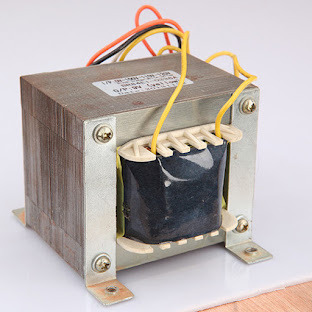Low-voltage transformers do not wear out. Before replacing the transformer, a technician should inspect the transformer to determine the cause. A transformer usually fails when another component of the electrical circuit is shorted to the ground or draws excessive amperage. If the fault is not found and corrected, the transformer will fail again.
Step 1
Use the label to identify the transformer's terminals. Transformers have input terminals, also known as the "primary," as well as output terminals, which are known as "secondary." The transformer's label identifies the input (high voltage) and the output (low voltage) sides, along with the input and output voltages -- measured as voltage-alternating-current (VAC) -- and their corresponding terminals.
Step 2
To activate the VAC function on a multimeter, turn it upside down. Multimeters have several settings. Each set measures an electrical function.
Step 3
The multimeter can be used to test the input voltage of the transformer using the label on the transformer as a guide. Record the voltage by placing one of the multimeter leads at each input-voltage terminal.
Compare this reading to the input voltage of your transformer. If the voltage reading is not consistent with the input voltage, you should troubleshoot the source of the voltage before proceeding with the transformer.
Step 4
The multimeter can be used to measure the output voltage of the transformer. Compare the output voltage to the reading. The transformer will work properly if the output voltage is correct.
If the input voltage shows a correct reading but the output voltage shows a high/low reading, then the secondary windings are at fault. You must replace the transformer.
If the input voltage is correct but the transformer doesn't produce any output voltage then check the continuity of the secondary windings. Also, make sure to check the secondary circuit for any shorts.
Step 5
Disconnect the electricity from the transformer. Verify the voltage at the input terminals. The multimeter should read zero.
Step 6
The "resistance to ohms" function of the multimeter is activated. The multimeter's leads should be touched together. The multimeter should sound a beep to indicate continuity.
Step 7
The wires connecting to the transformer's input side must be disconnected. Each input terminal should have a lead. The multimeter should read "continuity". If the multimeter doesn't read continuity, it is possible that the input windings are short. Replace the transformer.
Re-connect the input wires if the multimeter reads continuity.
Step 8
The output wires should be disconnected from the transformer. The multimeter can be used to check continuity between the secondary windings. If continuity is detected on the multimeter, it's time to troubleshoot.
If continuity is not shown on the multimeter across the secondary windings then inspect the secondary circuit for a potential short to ground. This can often be a bare wire. The transformer will need to be replaced.








No comments:
Post a Comment